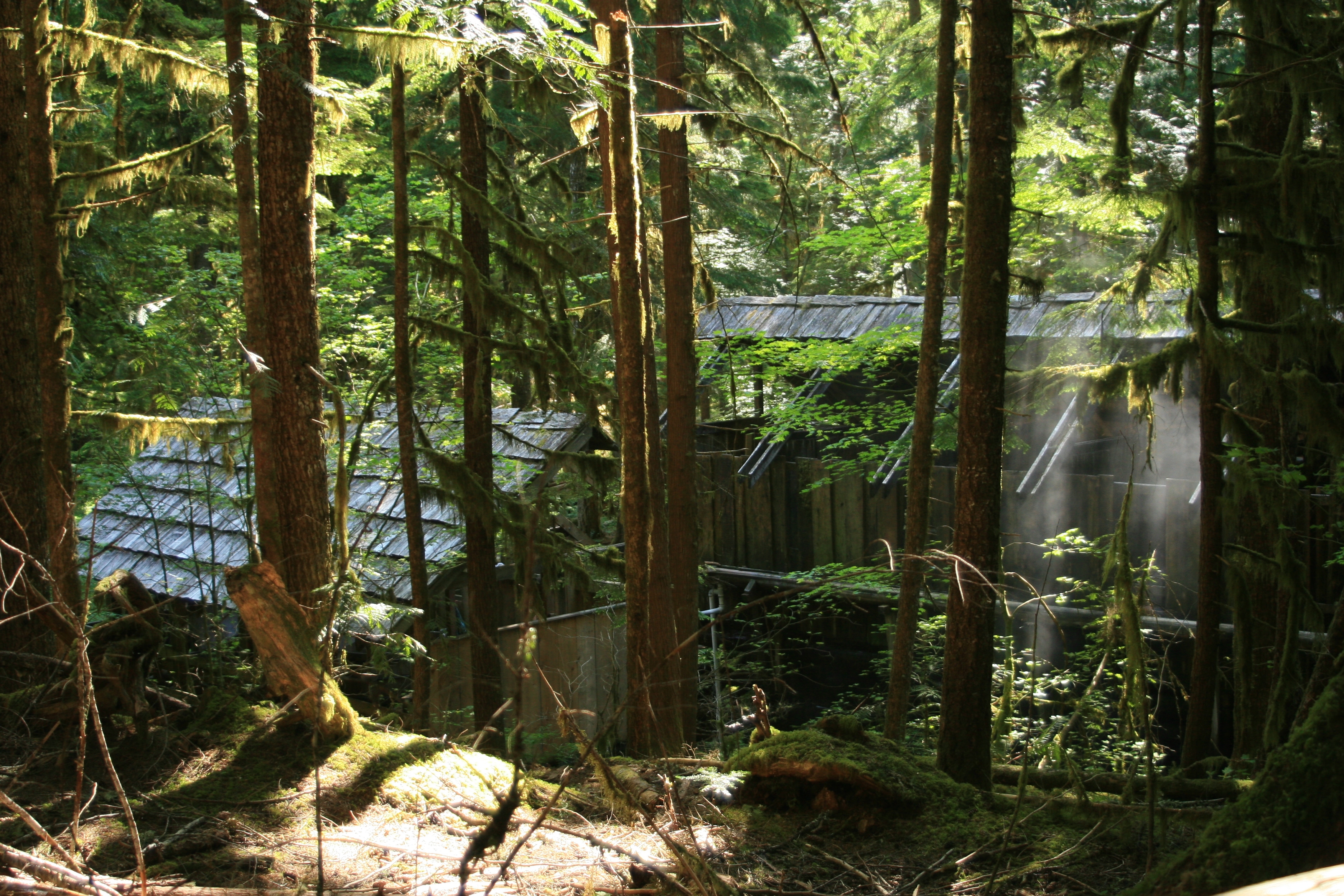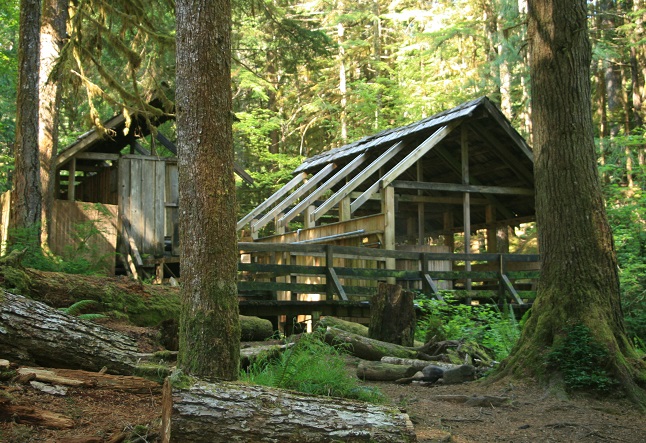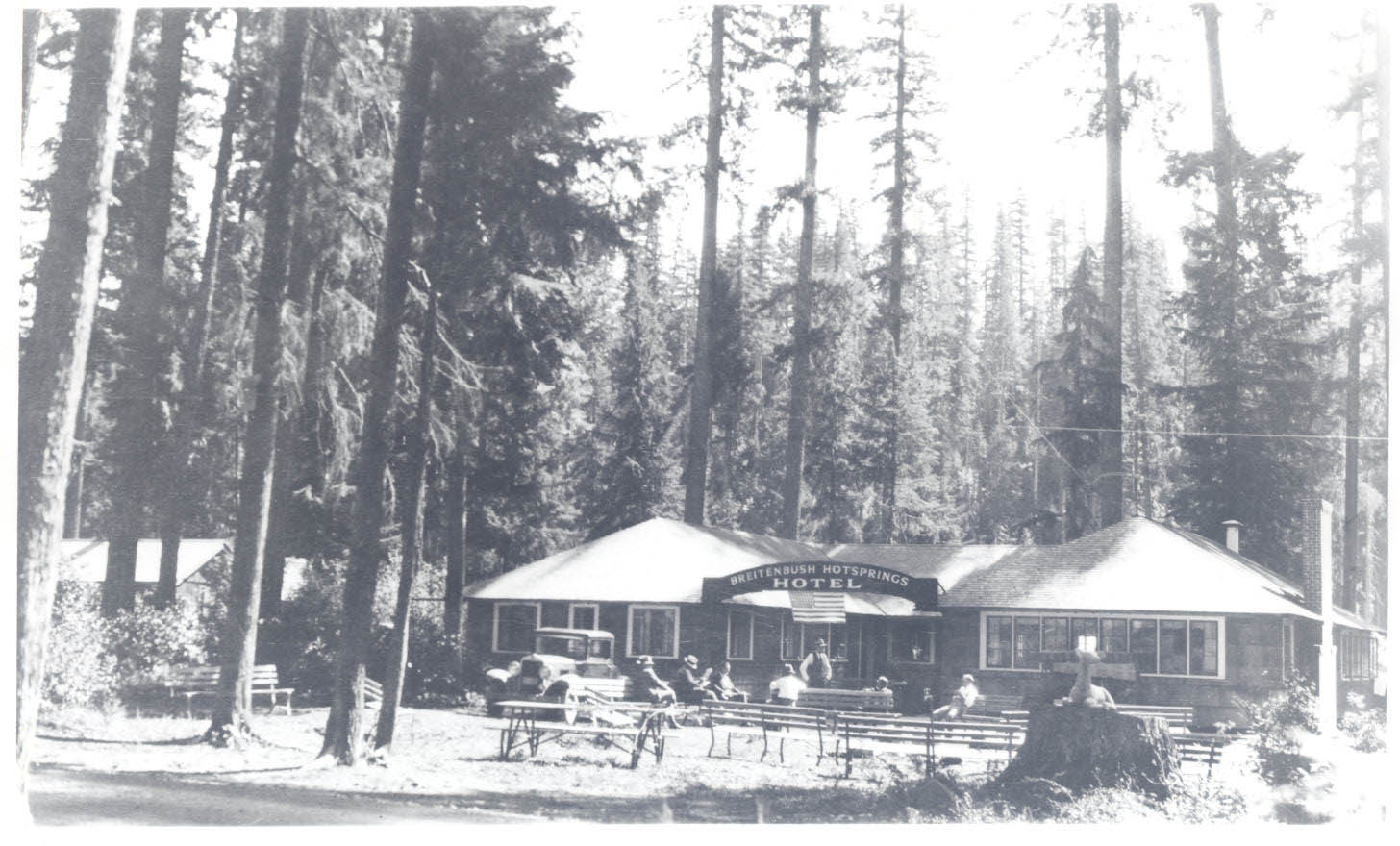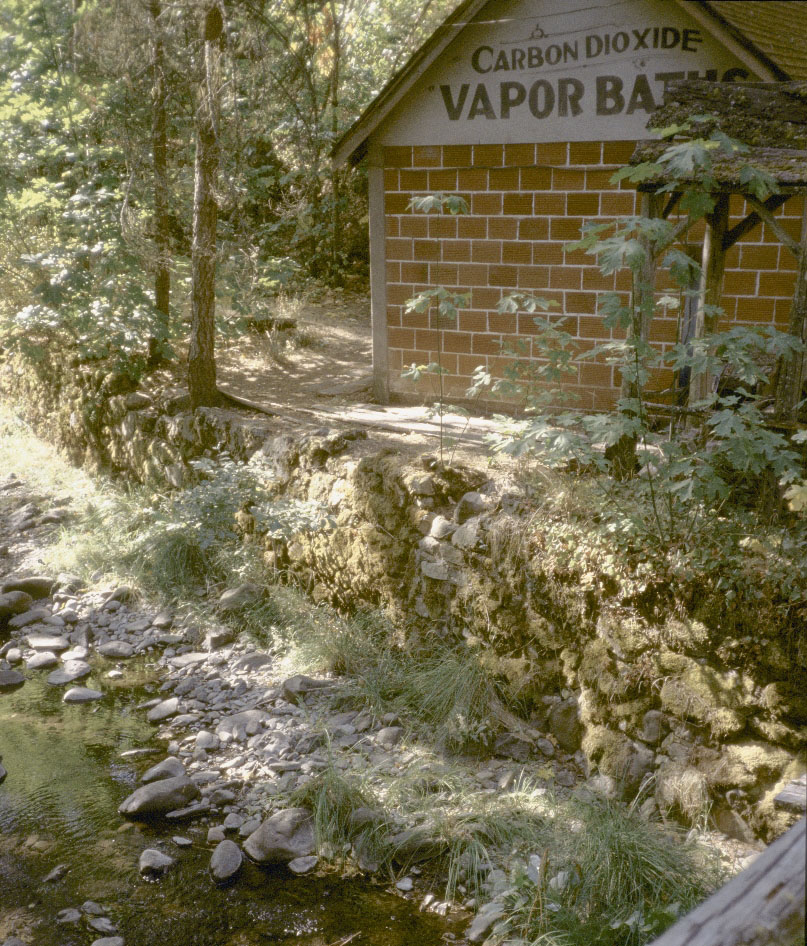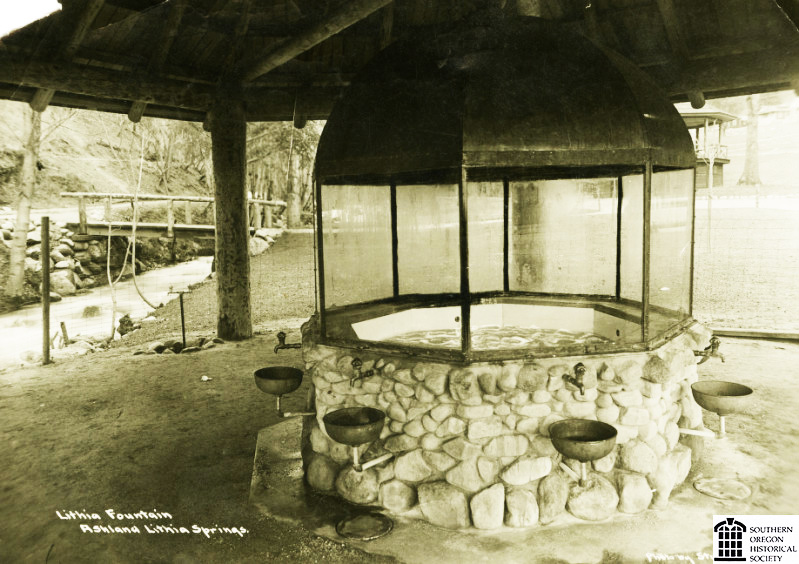Bagby Hot Springs is located in the Mount Hood National Forest about seventy miles southeast of Portland. The springs, whose hot mineral water Indians may have used as a curative, were named in 1881 by Robert W. Bagby, a prospector and miner who lived near Molalla. According to some accounts, Bagby came across a sign reading “Hell” with an arrow pointing uphill. He followed the arrow and found the hot mineral springs flowing from the ground. It is now a popular soaking spot with tubs and a bathhouse.
Located along the western edge of the crest of the Cascade Range, Bagby Hot Springs is at an elevation of 2,280 feet. The hot mineral water flows from two underground springs at 25 gallons per minute at about 136 degrees Fahrenheit. Bathers use a system of wooden pipes to fill cedar bathtubs with the steaming water.
The first structures at Bagby were built in 1908. The original U.S. Forest Service forest guard station—a log cabin used for a fire crew and switchboard—was built by Phillip Putz in 1913. The cabin and an adjoining shed were added to the National Register of Historic Places in September 1999. It is only one of six remaining cabin/shed combinations built by the Forest Service in the Pacific Northwest.
Tubs and a bathhouse were constructed at Bagby in 1939. After logging roads made the area more accessible in the 1950s and 1960s, the number of visitors increased dramatically, often to the detriment of the springs. The area around the springs became eroded from overuse, and there were many complaints about noise and alcohol and drug abuse, as well as car break-ins at the trailhead. At one time, the Forest Service even considered closing the area to recreational use.
After the bathhouse and other structures were destroyed by fire in 1979, a group called the Friends of Bagby Hot Springs negotiated with the Forest Service to help manage the site. Under the organization’s care, Bagby facilities were improved, with a new open-air bathhouse and expanded visitor facilities. From the paved forest roads, there is a trailhead parking area for the 1.5-mile walk to the springs. Three bathhouse structures with soaking tubs were constructed of hollowed-out cedar logs salvaged from the original bathhouse. The new bathhouse has a half roof so visitors can see the tall evergreen trees and the sky. Clothing is optional.
The Friends of Bagby Hot Springs and the Mount Hood National Forest cooperate to manage the Bagby Hot Springs area. The Northwest Forest Conservancy maintains the trail and has partially restored the guard station cabin. Overnight camping is not permitted at the site, but visitors often spend many hours late into the evening soaking in the tubs. Forest Service law enforcement has increased its presence at the springs to make sure the site and visitors to the area are safe. Because of such concerns, the Forest Service is considering having a commercial operator take over management of Bagby.
-
![]()
Bagby Hot Springs.
Courtesy U.S. Forest Service
-
![]()
Bagby Hot Springs.
Courtesy U.S. Forest Service
Related Entries
-
![Breitenbush Hot Springs]()
Breitenbush Hot Springs
Nestled in the northern tip of the Willamette National Forest, about si…
-
![Buckhorn Mineral Springs Resort]()
Buckhorn Mineral Springs Resort
Buckhorn Mineral Springs is on Emigrant Creek, about eleven miles south…
-
![Lithia Park]()
Lithia Park
Lithia Park in Ashland is a good example of what Fredrick Law Olmsted c…
Map This on the Oregon History WayFinder
The Oregon History Wayfinder is an interactive map that identifies significant places, people, and events in Oregon history.
Further Reading
Flagg, Kirsten. "Bagby's Slow Burn." Willamette Week, Sep. 5, 2001. http://www.wweek.com/portland/article-308-bagbys_slow_burn.html.
Mortenson, Eric. "At Mount Hood's troubled, beautiful Bagby Hot Springs, the possibility of change soaks in." Oregonian, Jan. 2, 2011. http://www.oregonlive.com/environment/index.ssf/2011/01/at_troubled_beautiful_bagby_ho.html.

